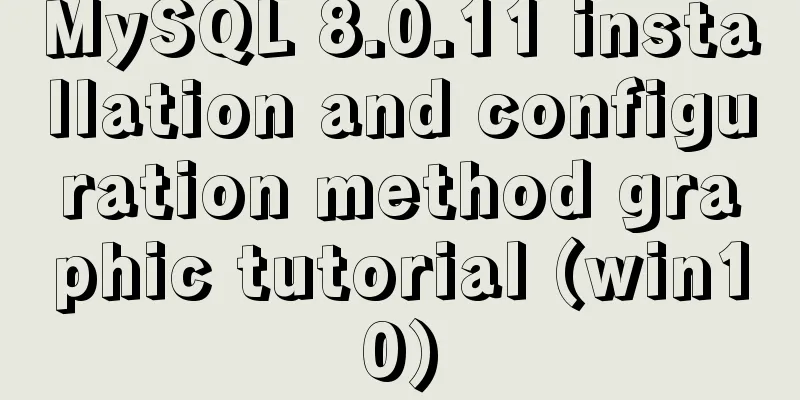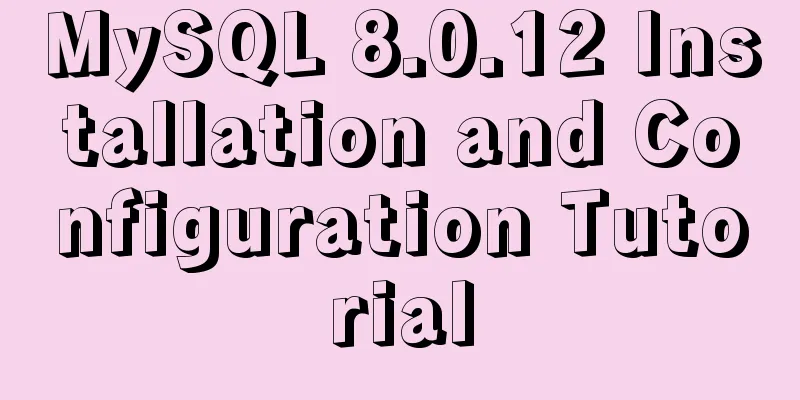Table of contents- 1. System Information
- 2. Shutdown (system shutdown, restart and logout)
- 3. Files and Directories
- 4. File Search
- 5. Mount a file system
- 6. Disk Space
- 7. Users and Groups
- 9. File permissions - Use "+" to set permissions and "-" to cancel
- 10. Special attributes of files - use "+" to set permissions and "-" to cancel
- 11. Pack and compress files
- 12.RPM package - (Fedora, Redhat and similar systems)
- 13.YUM Package Updater - (Fedora, RedHat and similar systems)
- 14.DEB package (Debian, Ubuntu and similar systems)
- 15. APT software tools (Debian, Ubuntu and similar systems)
- 16. View file contents
- 17. Text Processing
- 18. Character setting and file format conversion
- 19. File system analysis
- 20. Initialize a file system
- 21.SWAP file system
- 22. Backup
- 23. CD
- 24. Network - (Ethernet and WIFI wireless)
1. System Information| Order | |
|---|
| arch | Display the processor architecture of the machine(1) | | uname -m | Displays the machine's processor architecture(2) | | uname -r | Displays the kernel version in use | | dmidecode -q | Displays hardware system components - (SMBIOS / DMI) | | hdparm -i /dev/hda | List the architectural features of a disk | | hdparm -tT /dev/sda | Perform a test read operation on the disk | | cat /proc/cpuinfo | Display CPU info information | | cat /proc/interrupts | Display interruption | | cat /proc/meminfo | Verify memory usage | | cat /proc/swaps | Shows which swaps are used | | cat /proc/version | Displays the kernel version | | cat /proc/net/dev | Display network adapters and statistics | | cat /proc/mounts | Display mounted file systems | | lspci -tv | List PCI devices | | lsusb -tv | Show USB Devices | | date | Display system date | | cal 2007 | Display the calendar for 2007 | | date 041217002007.00 | Set date and time - month, day, hour, minute, year, second | | clock -w | Save time changes to BIOS |
2. Shutdown (system shutdown, restart and logout)| Order | |
|---|
| shutdown -h now | Shutdown system(1) | | init 0 | Shutdown system(2) | | telinit 0 | Shutdown system(3) | | shutdown -h hours:minutes & | Shut down the system at a scheduled time | | shutdown -c | Cancel scheduled system shutdown | | shutdown -r now | Restart(1) | | reboot | Restart(2) | | logout | Logout |
3. Files and Directories| Order | |
|---|
| cd /home | Go to the '/home' directory | | cd .. | Return to the previous directory | | cd ../.. | Return to the previous two levels | | cd | Enter your home directory | | cd ~user1 | Enter your home directory | | cd - | Return to the last directory | | pwd | Show Work Path | | ls | View files in a directory | | ls -F | View files in a directory | | ls -l | Display detailed information about files and directories | | ls -a | Show hidden files | | ls [0-9] | Display file and directory names containing numbers | | tree | Displays a tree structure of files and directories starting from the root directory (1) | | lstree | Displays the tree structure of files and directories starting from the root directory (2) | | mkdir dir1 | Create a directory called 'dir1' | | mkdir dir1 dir2 | Create two directories at the same time | | mkdir -p /tmp/dir1/dir2 | Create a directory tree | | rm -f file1 | Delete a file called 'file1' | | rmdir dir1 | Delete a directory called 'dir1' | | rm -rf dir1 | Delete a directory called 'dir1' and delete its contents | | rm -rf dir1 dir2 | Delete both directories and their contents | | mv dir1 new_dir | Rename/Move a Directory | | cp file1 file2 | Copy a file | | cp dir/* . | Copy all files in a directory to the current working directory | | cp -a /tmp/dir1 . | Copy a directory to the current working directory | | cp -a dir1 dir2 | Copy a directory | | ln -s file1 lnk1 | Creates a soft link to a file or directory | | ln file1 lnk1 | Creates a physical link to a file or directory | | touch -t 0712250000 file1 | Modification timestamp of a file or directory - (YYMMDDhhmm) | | iconv -l | List known encodings |
4. File Search| Order | |
|---|
| find / -name file1 | Start at '/' and search for files and directories in the root file system | | find / -user user1 | Search for files and directories belonging to user 'user1' | | find /home/user1 -name \*.bin | Search the directory '/home/user1' for files ending with '.bin' | | find /usr/bin -type f -atime +100 | Search for executable files that have not been used in the past 100 days | | find /usr/bin -type f -mtime -10 | Search for files created or modified within 10 days | | find / -name \*.rpm -exec chmod 755 '{}' \; | Search for files ending with '.rpm' and define their permissions | | find / -xdev -name *.rpm | Search for files ending with '.rpm', ignoring removable devices such as CD-ROMs and Jiepian | | locate *.ps | Look for files ending in '.ps' - run 'updatedb' command first | | whereis halt | Displays the location of a binary file, source code, or man page. | | which halt | Displays the full path to a binary or executable file |
5. Mount a file system| Order | |
|---|
| mount /dev/hda2 /mnt/hda2 | Mount a disk called hda2 - Make sure the directory '/mnt/hda2' already exists | | umount /dev/hda2 | Unmount a disk called hda2 - first exit from the mount point '/mnt/hda2' | | fuser -km /mnt/hda2 | Force unmount when device is busy | | umount -n /mnt/hda2 | Run the unmount operation without writing to the /etc/mtab file - useful when the file is read-only or when the disk is full | | mount /dev/fd0 /mnt/floppy | Mount a floppy disk | | mount /dev/cdrom /mnt/cdrom | Mount a cdrom or dvdrom | | mount /dev/hdc /mnt/cdrecorder | Mount a cdrw or dvdrom | | mount /dev/hdb /mnt/cdrecorder | Mount a cdrw or dvdrom | | mount -o loop file.iso /mnt/cdrom | Mount a file or ISO image | | mount -t vfat /dev/hda5 /mnt/hda5 | Mounting a Windows FAT32 file system | | mount /dev/sda1 /mnt/usbdisk | Mount a USB flash drive or flash drive | | mount -t smbfs -o username=user,password=pass //WinClient/share /mnt/share | Mount a Windows network share |
6. Disk Space| Order | |
|---|
| df -h | Displays a list of mounted partitions | | ls -lSr |more | Sort files and directories by size | | du -sh dir1 | Estimate the disk space used by directory 'dir1' | | du -sk * | sort -rn | Display the size of files and directories in order of capacity | | rpm -q -a --qf '%10{SIZE}t%{NAME}n' | sort -k1,1n | | dpkg-query -W -f='installed-size;10t{Package}n' | sort -k1,1n |
7. Users and Groups| Order | |
|---|
| groupadd group_name | Create a New User Group | | groupdel group_name | Deleting a User Group | | groupmod -n new_group_name old_group_name | Rename a user group | | useradd -c "Name Surname " -g admin -d /home/user1 -s /bin/bash user1 | Create a user belonging to the "admin" user group | | useradd user1 | Create a New User | | userdel -r user1 | Remove a user ('-r' excludes home directories) | | usermod -c "User FTP" -g system -d /ftp/user1 -s /bin/nologin user1 | Modify User Properties | | passwd | Change Password | | passwd user1 | Change a user's password (only root is allowed to execute) | | chage -E 2005-12-31 user1 | Set the expiration date of the user password | | pwck | Check '/etc/passwd' file format and syntax correction and existing users | | grpck | Check '/etc/passwd' for file format and syntax corrections and existing groups | | newgrp group_name | Log in to a new group to change the default group for newly created files |
9. File permissions - Use "+" to set permissions and "-" to cancel| Order | |
|---|
| ls -lh | Display permissions | | ls /tmp | pr -T5 -W$COLUMNS | Divide the terminal into 5 columns | | chmod ugo+rwx directory1 | Set the directory's read (r), write (w), and execute (x) permissions for the owner (u), group (g), and others (o) | | chmod go-rwx directory1 | Delete the read, write and execute permissions of the group (g) and others (o) on the directory | | chown user1 file1 | Change the owner attribute of a file | | chown -R user1 directory1 | Change the owner's attributes of a directory and change the attributes of all files in the directory at the same time | | chgrp group1 file1 | Change the group of a file | | chown user1:group1 file1 | Change the owner and group attributes of a file | | find / -perm -u+s | List all files in a system that use SUID control | | chmod u+s /bin/file1 | Set the SUID bit on a binary file - the user who runs the file is given the same permissions as the owner | | chmod us /bin/file1 | Disable the SUID bit on a binary | | chmod g+s /home/public | Set the SGID bit on a directory - similar to SUID, but for directories | | chmod gs /home/public | Disable the SGID bit for a directory | | chmod o+t /home/public | Set the STIKY bit on a file - only allow the legitimate owner to delete the file | | chmod ot /home/public | Disable the STIKY bit for a directory |
10. Special attributes of files - use "+" to set permissions and "-" to cancel| Order | |
|---|
| chattr +a file1 | Only append mode is allowed to read and write files | | chattr +c file1 | Allow this file to be automatically compressed/decompressed by the kernel | | chattr +d file1 | When backing up the file system, the dump program will ignore this file. | | chattr +i file1 | Set as an immutable file that cannot be deleted, modified, renamed or linked | | chattr +s file1 | Allows a file to be securely deleted | | chattr +S file1 | Once the application performs a write operation on this file, the system immediately writes the modified results to disk | | chattr +u file1 | If a file is deleted, the system will allow you to restore the deleted file later | | lsattr | Display special properties |
11. Pack and compress files| Order | |
|---|
| bunzip2 file1.bz2 | Unzip a file called 'file1.bz2' | | bzip2 file1 | Compress a file called 'file1' | | gunzip file1.gz | Unzip a file called 'file1.gz' | | gzip file1 | Compress a file called 'file1' | | gzip -9 file1 | Maximum compression | | rar a file1.rar test_file | Create a package called 'file1.rar' | | rar a file1.rar file1 file2 dir1 | Compress 'file1', 'file2' and directory 'dir1' at the same time | | rar x file1.rar | Unzip the rar package | | unrar x file1.rar | Unzip the rar package | | tar -cvf archive.tar file1 | Create an uncompressed tarball | | tar -cvf archive.tar file1 file2 dir1 | Create an archive file containing 'file1', 'file2' and 'dir1' | | tar -tf archive.tar | Display the contents of a package | | tar -xvf archive.tar | Release a package | | tar -xvf archive.tar -C /tmp | Extract the compressed file to the /tmp directory | | tar -cvfj archive.tar.bz2 dir1 | Create a bzip2 compressed file | | tar -xvfj archive.tar.bz2 | Decompress a bzip2 compressed file | | tar -cvfz archive.tar.gz dir1 | Create a gzip compressed file | | tar -xvfz archive.tar.gz | Decompress a gzip compressed file | | zip file1.zip file1 | Create a zip file | | zip -r file1.zip file1 file2 dir1 | Compress several files and directories into a zip file at the same time | | unzip file1.zip | Unzip a zip file |
12.RPM package - (Fedora, Redhat and similar systems)| Order | |
|---|
| rpm -ivh package.rpm | Install an rpm package | | rpm -ivh --nodeeps package.rpm | Installing an rpm package ignoring dependency warnings | | rpm -U package.rpm | Update an rpm package without changing its configuration file | | rpm -F package.rpm | Update an rpm package that is already installed | | rpm -e package_name.rpm | Delete an rpm package | | rpm -qa | Display all installed rpm packages in the system | | rpm -qa | grep httpd | | rpm -qi package_name | Get specific information about an installed package | | rpm -qg "System Environment/Daemons" | Display the rpm package of a component | | rpm -ql package_name | Displays a list of files provided by an installed rpm package | | rpm -qc package_name | Displays a list of configuration files provided by an installed rpm package | | rpm -q package_name --whatrequires | Displays a list of dependencies for an rpm package | | rpm -q package_name --whatprovides | Display the size of an rpm package | | rpm -q package_name --scripts | Shows scripts executed during installation/removal | | rpm -q package_name --changelog | Display the modification history of an rpm package | | rpm -qf /etc/httpd/conf/httpd.conf | Determine which rpm package provides the given file | | rpm -qp package.rpm -l | Displays a list of files provided by a not yet installed rpm package | | rpm --import /media/cdrom/RPM-GPG-KEY | Importing a public key digital certificate | | rpm --checksig package.rpm | Confirm the integrity of an rpm package | | rpm -qa gpg-pubkey | Confirm the integrity of all installed rpm packages | | rpm -V package_name | Check file size, permissions, type, owner, group, MD5 checksum and last modified time | | rpm -Va | Checks all installed rpm packages on the system - use with caution | | rpm -Vp package.rpm | Confirm that an rpm package has not been installed | | rpm2cpio package.rpm | cpio --extract --make-directories bin | | rpm -ivh /usr/src/redhat/RPMS/arch/package.rpm | Installing a built package from an rpm source | | rpmbuild --rebuild package_name.src.rpm | Build an rpm package from an rpm source |
13.YUM Package Updater - (Fedora, RedHat and similar systems)| Order | |
|---|
| yum install package_name | Download and install an rpm package | | yum localinstall package_name.rpm | will install an rpm package that resolves all dependencies for you using your own software repository | | yum update package_name.rpm | Update all installed rpm packages in the current system | | yum update package_name | Update an rpm package | | yum remove package_name | Delete an rpm package | | yum list | List all packages currently installed in the system | | yum search package_name | Searching for packages in the rpm repository | | yum clean packages | Clean the rpm cache and delete the downloaded packages | | yum clean headers | Delete all header files | | yum clean all | Delete all cached packages and header files |
14.DEB package (Debian, Ubuntu and similar systems)| Order | |
|---|
| dpkg -i package.deb | Install/update a deb package | | dpkg -r package_name | Remove a deb package from the system | | dpkg -l | Display all installed deb packages in the system | | dpkg -l | grep httpd | | dpkg -s package_name | Get information about a specific package installed on the system | | dpkg -L package_name | Displays a list of files provided by a deb package that has been installed on the system | | dpkg --contents package.deb | Displays a list of files provided by a package that is not installed yet | | dpkg -S /bin/ping | Determine which deb package provides the given file |
15. APT software tools (Debian, Ubuntu and similar systems)| Order | |
|---|
| apt-get install package_name | Install/update a deb package | | apt-cdrom install package_name | Install/update a deb package from a CD | | apt-get update | Upgrade the packages in the list | | apt-get upgrade | Upgrade all installed software | | apt-get remove package_name | Remove a deb package from the system | | apt-get check | Confirm that the dependent software repository is correct | | apt-get clean | Clean cache from downloaded packages | | apt-cache search searched-package | Returns the name of the package that contains the search string |
16. View file contents| Order | |
|---|
| cat file1 | View the contents of the file starting from the first byte | | tac file1 | View the contents of a file in reverse order starting from the last line | | more file1 | View the contents of a long file | | less file1 | Similar to the 'more' command, but it allows reverse operation on a file as well as forward operation | | head -2 file1 | View the first two lines of a file | | tail -2 file1 | View the last two lines of a file | | tail -f /var/log/messages | View content being added to a file in real time |
17. Text Processing| Order | |
|---|
| cat file1 file2 ... | command <> file1_in.txt_or_file1_out.txt | | cat file1 | command( sed, grep, awk, grep, etc...) > result.txt | | cat file1 | command( sed, grep, awk, grep, etc...) >> result.txt | | grep Aug /var/log/messages | Search for the keyword "Aug" in the file '/var/log/messages' | | grep ^Aug /var/log/messages | Search the file '/var/log/messages' for words starting with "Aug" | | grep [0-9] /var/log/messages | Select all lines containing numbers in the file '/var/log/messages' | | grep Aug -R /var/log/* | Search for the string "Aug" in the directory '/var/log' and subsequent directories | | sed 's/stringa1/stringa2/g' example.txt | Replace "string1" in the example.txt file with "string2" | | sed '/^$/d' example.txt | Remove all blank lines from example.txt file | | sed '/ *#/d; /^$/d' example.txt | Remove all comments and blank lines from the example.txt file | | echo 'esempio' | tr '[:lower:]' '[:upper:]' | | sed -e '1d' result.txt | Exclude the first line from the file example.txt | | sed -n '/stringa1/p' | View only the lines containing the word "string1" | | sed -e 's/ *$//' example.txt | Remove the last blank characters in each line | | sed -e 's/stringa1//g' example.txt | Remove only the word "string1" from the document and keep all the rest | | sed -n '1,5p;5q' example.txt | View the contents from the first line to the fifth line | | sed -n '5p;5q' example.txt | View line 5 | | sed -e 's/00*/0/g' example.txt | Replace multiple zeros with a single zero | | cat -n file1 | Indicates the number of lines in the file | | cat example.txt | awk 'NR%2==1' | | echo abc | awk '{print $1}' | | echo abc | awk '{print $1,$3}' | | paste file1 file2 | Merge the contents of two files or two columns | | paste -d '+' file1 file2 | Merge the contents of two files or two columns, using "+" to separate them | | sort file1 file2 | Sort the contents of two files | | sort file1 file2 | uniq | Take the union of two files (keep only one copy of the duplicate lines) | | sort file1 file2 | uniq -u | Delete the intersection, leaving the other rows | | sort file1 file2 | uniq -d | Take out the intersection of two files (keep only the files that exist in both files) | | comm -1 file1 file2 | Compare the contents of two files and delete only the contents of 'file1' | | comm -2 file1 file2 | Compare the contents of two files and delete only the contents of 'file2' | | comm -3 file1 file2 | Compare the contents of two files and delete only the parts that are common to both files |
18. Character setting and file format conversion| Order | |
|---|
| dos2unix filedos.txt fileunix.txt | Convert a text file from MSDOS to UNIX | | unix2dos fileunix.txt filedos.txt | Convert a text file from UNIX to MSDOS | | recode ..HTML < page.txt > page.html | Convert a text file to html | | recode -l | more | Show all allowed conversion formats |
19. File system analysis| Order | |
|---|
| badblocks -v /dev/hda1 | Check for bad blocks on disk hda1 | | fsck /dev/hda1 | Repair/check integrity of linux file system on hda1 disk | | fsck.ext2 /dev/hda1 | Repair/check integrity of ext2 filesystem on hda1 disk | | e2fsck /dev/hda1 | Repair/check integrity of ext2 filesystem on hda1 disk | | e2fsck -j /dev/hda1 | Repair/check integrity of ext3 filesystem on hda1 disk | | fsck.ext3 /dev/hda1 | Repair/check integrity of ext3 filesystem on hda1 disk | | fsck.vfat /dev/hda1 | Repair/check integrity of fat file system on hda1 disk | | fsck.msdos /dev/hda1 | Repair/check integrity of the DOS file system on disk hda1 | | dosfsck /dev/hda1 | Repair/check integrity of the DOS file system on disk hda1 |
20. Initialize a file system| Order | |
|---|
| mkfs /dev/hda1 | Create a file system on the hda1 partition | | mke2fs /dev/hda1 | Create a linux ext2 file system on the hda1 partition | | mke2fs -j /dev/hda1 | Create a Linux ext3 (journaling) file system on the hda1 partition | | mkfs -t vfat 32 -F /dev/hda1 | Create a FAT32 file system | | fdformat -n /dev/fd0 | Format a floppy disk | | mkswap /dev/hda3 | Create a swap file system |
21.SWAP file system| Order | |
|---|
| mkswap /dev/hda3 | Create a swap file system | | swapon /dev/hda3 | Enable a new swap file system | | swapon /dev/hda2 /dev/hdb3 | Enable two swap partitions |
22. Backup| Order | |
|---|
| dump -0aj -f /tmp/home0.bak /home | Make a complete backup of the '/home' directory | | dump -1aj -f /tmp/home0.bak /home | Make an interactive backup of the '/home' directory | | restore -if /tmp/home0.bak | Restoring an interactive backup | | rsync -rogpav --delete /home /tmp | Synchronize the directories on both sides | | rsync -rogpav -e ssh --delete /home ip_address:/tmp | rsync over SSH tunnel | | rsync -az -e ssh --delete ip_addr:/home/public /home/local | Synchronize a remote directory to a local directory via ssh and compression | | rsync -az -e ssh --delete /home/local ip_addr:/home/public | Sync local directory to remote directory via ssh and compression | | dd bs=1M if=/dev/hda | gzip | | dd if=/dev/sda of=/tmp/file1 | Back up disk contents to a file | | tar -Puf backup.tar /home/user | Perform an interactive backup of the '/home/user' directory | | ( cd /tmp/local/ && tar c . ) | ssh -C user@ip_addr 'cd /home/share/ && tar x -p' | | ( tar c /home ) | ssh -C user@ip_addr 'cd /home/backup-home && tar x -p' | | tar cf - . | (cd /tmp/backup ; tar xf - ) | | find /home/user1 -name '*.txt' | xargs cp -av --target-directory=/home/backup/ --parents | | find /var/log -name '*.log' | tar cv --files-from=- | | dd if=/dev/hda of=/dev/fd0 bs=512 count=1 | Make an action to copy the contents of MBR (Master Boot Record) to a floppy disk | | dd if=/dev/fd0 of=/dev/hda bs=512 count=1 | Restore the MBR contents from a backup saved to a floppy disk |
23. CD| Order | |
|---|
| cdrecord -v gracetime=2 dev=/dev/cdrom -eject blank=fast -force | Clear a rewritable disc | | mkisofs /dev/cdrom > cd.iso | Create an iso image file of a CD on disk | | mkisofs /dev/cdrom | gzip > cd_iso.gz | | mkisofs -J -allow-leading-dots -R -V "Label CD" -iso-level 4 -o ./cd.iso data_cd | Create an iso image file of a directory | | cdrecord -v dev=/dev/cdrom cd.iso | Burn an ISO image file | | gzip -dc cd_iso.gz | cdrecord dev=/dev/cdrom - | Burn a compressed ISO image file | | mount -o loop cd.iso /mnt/iso | Mount an ISO image file | | cd-paranoia -B | Rip audio tracks from a CD to a wav file | | cd-paranoia -- "-3" | Rip audio tracks from a CD to a wav file (parameter -3) | | cdrecord --scanbus | Scan the bus to identify scsi channels | | dd if=/dev/hdc | md5sum | Verify the md5sum code of a device, such as a CD |
24. Network - (Ethernet and WIFI wireless)| Order | |
|---|
| ifconfig eth0 | Displays the configuration of an Ethernet card | | ifup eth0 | Enable an 'eth0' network device | | ifdown eth0 | Disable an 'eth0' network device | | ifconfig eth0 192.168.1.1 netmask 255.255.255.0 | Control IP Address | | ifconfig eth0 promisc | Set 'eth0' to promiscuous mode for sniffing packets | | dhclient eth0 | Enable 'eth0' in dhcp mode | | route -n | show routing table | | route add -net 0/0 gw IP_Gateway | configure default gateway | | route add -net 192.168.0.0 netmask 255.255.0.0 gw 192.168.1.1 | configure static route to reach network '192.168.0.0/16' | | route del 0/0 gw IP_gateway | remove static route | | echo "1" > /proc/sys/net/ipv4/ip_forward | activate ip routing | | hostname | show hostname of system | | host www.example.com | Lookup hostname to resolve name to IP address and vice versa(1) | | nslookup www.example.com | lookup hostname to resolve name to ip address and vice versa(2) | | ip link show | show link status of all interfaces | | mii-tool eth0 | show link status of 'eth0' | | ethtool eth0 | show statistics of network card 'eth0' | | netstat -tup | show all active network connections and their PID | | netstat -tupl | show all network services listening on the system and their PID | | tcpdump tcp port 80 | show all HTTP traffic | | iwlist scan | show wireless networks | | iwconfig eth1 | show configuration of a wireless network card | | whois www.example.com | lookup on Whois database |
This is the end of this article about the complete list of commonly used Linux commands (recommended collection). For more related content on commonly used Linux commands, please search for previous articles on 123WORDPRESS.COM or continue to browse the following related articles. I hope you will support 123WORDPRESS.COM in the future! You may also be interested in:- A complete list of commonly used Linux commands (super comprehensive)
- Detailed explanation of the usage of grep command in Linux
- Solve the problem that the commonly used Linux command "ll" is invalid or the command is not found
- Linux common commands chmod to modify file permissions 777 and 754
- Introduction to Linux and the most commonly used commands (easy to learn, but can solve more than 95% of the problems)
- Linux commonly used commands performance commands
|










